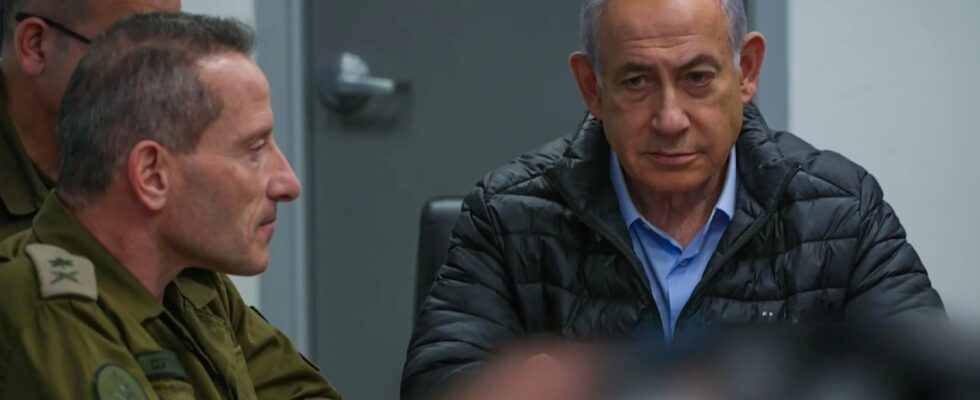In the early evening of Tuesday, November 26, strikes again targeted the center of Beirut, shortly after Israeli calls to evacuate four areas of the Lebanese capital. At the same time, at 6 p.m. GMT (7 p.m. in France), Israeli Prime Minister Benjamin Netanyahu announced in a televised address that his country, via the security cabinet, will adopt a ceasefire in Lebanon. tonight”, which should put an end to more than a year of cross-border hostilities and two months of open war in Lebanon.
The Hebrew head of state gave three reasons for implementing a truce today. “The first, we must focus on the Iranian threat. The second, we must simply allow the troops to rest and we must acquire new munitions to protect the soldiers. The third is the isolation of Hamas,” he said. – he explained in a televised speech lasting around twenty minutes.
A 60-day truce
“We took Hezbollah back ten years […] Three months ago, all this would have seemed like science fiction. But we did it. Hezbollah is no longer the same,” said Benjamin Netanyahu. He warned, however, that his country “will respond” if Hezbollah violates the truce and will maintain “total” freedom of action in Lebanon. He did not however, did not announce when the approximately 60,000 inhabitants of the north of the country displaced by the war with Hezbollah would be able to return home and refrained from making the slightest announcement on the subject.
A ceasefire should also help put an end to the conflict in Gaza, American Secretary of State Antony Blinken said before the announcement of the agreement. The G7 foreign ministers called on Tuesday for an “immediate ceasefire”, while the head of diplomacy of the European Union, Josep Borrell, declared that the Israeli government had “no more excuses” for refusing it. The international mediation was based on UN Security Council Resolution 1701, which ended the previous war between Israel and Hezbollah in 2006, and stipulates that only the Lebanese army and peacekeepers can be deployed to the southern border of Lebanon.
According to the American news site Axiosthe agreement is based on an American project providing for a 60-day truce during which Hezbollah and the Israeli army would withdraw from southern Lebanon to allow the Lebanese army to deploy there. It includes the establishment of an international committee to monitor its application, added Axios, specifying that the United States would have given assurances of its support for Israeli military action in the event of hostile acts by Hezbollah.
Before giving the green light, Israel increased its aerial bombardments on Tuesday in the center of the Lebanese capital – where at least ten people were killed according to the Lebanese authorities – and its southern suburbs, a stronghold of Hezbollah, after calls to evacuate. According to the Lebanese Ministry of Health, nearly 3,800 people have been killed in Lebanon since October 2023, most since last September. The hostilities have displaced some 900,000 people, according to the UN. On the Israeli side, 82 soldiers and 47 civilians were killed in 13 months. As for Gaza, the Israeli army continues its strikes on the besieged territory. “We are committed to bringing all the hostages from Gaza home. We are committed to completing the eradication of Hamas,” said Benjamin Netanyahu.
This Tuesday evening, a few minutes before the implementation of a ceasefire in Lebanon, the center of Beirut was hit hard by several Israeli strikes, notably the Hamra district.
